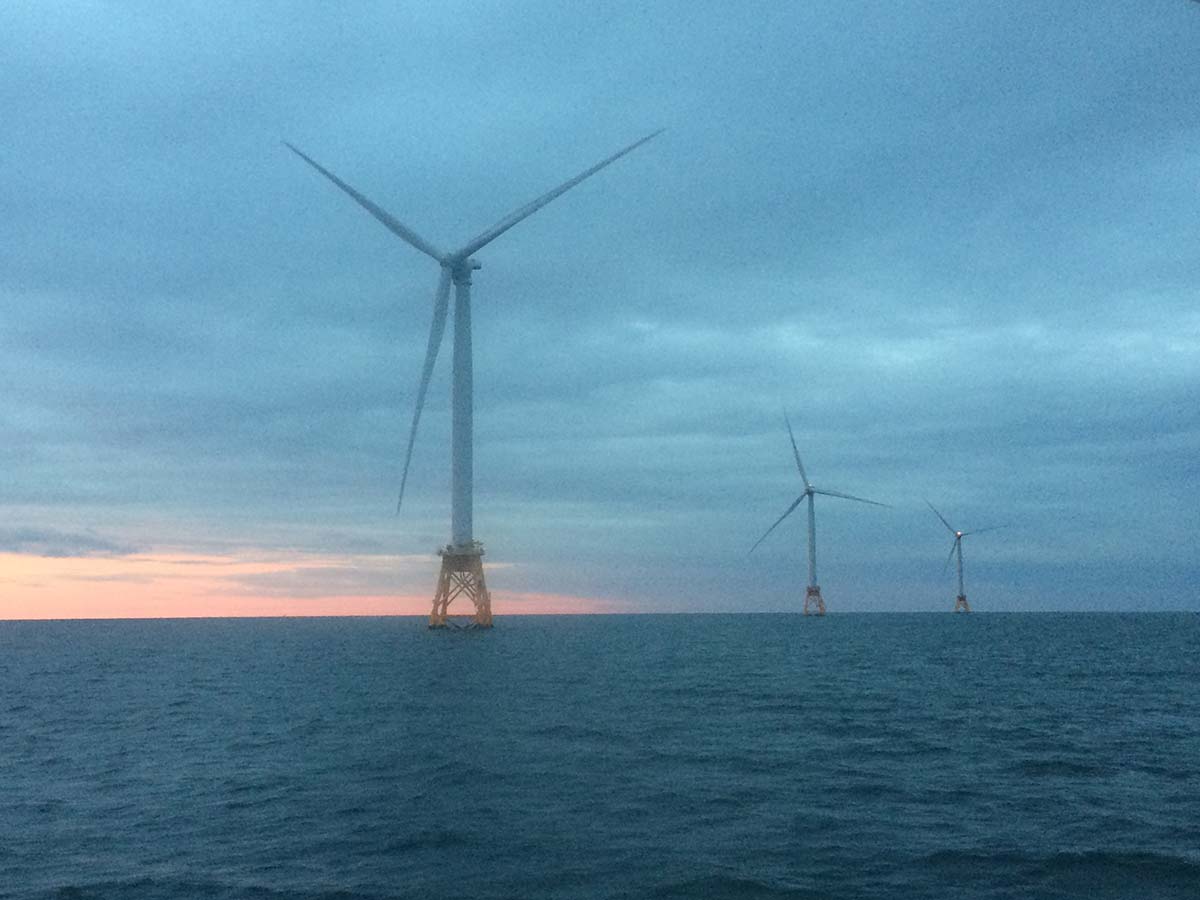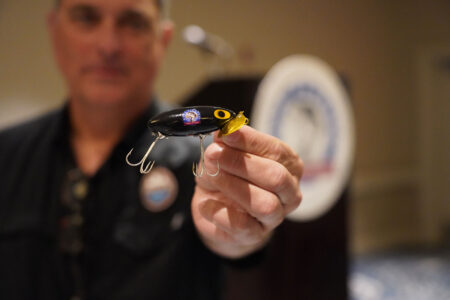A new report from scientists at NOAA Fisheries shows the effects of underwater pile driving and construction noise associated with windfarm development off the coast may interfere with the natural behavior of black sea bass.
“No one knew for sure how much black sea bass can hear and how that changes as they age,” said Beth Phelan, a fishery biologist at the Northeast Fisheries Science Center’s laboratory at Sandy Hook, New Jersey and a co-author of the study. “We do know that black sea bass are attracted to underwater structures, and have anecdotal information that they move away from noise. We had to first determine the range of sounds they can hear by giving them a type of hearing test, much like we do to humans.”
Their study is the first to look at the impact of ocean noise on this fish species and it found that younger fish were more sensitive to sounds than older fish. The frequencies at which the fish are most sensitive to sound directly overlap with frequencies of human-produced noise pollution. This noise comes from activities like shipping and the underwater construction required for offshore wind farms.

The study used 20 black sea bass of different sizes and ages, characterized as small, medium, or large. Researchers collected the fish from waters around Woods Hole and Martha’s Vineyard, MA and off coastal New Jersey. They then held the fish in flow-through tanks at seasonal temperatures at the science center’s James J. Howard Marine Sciences Laboratory in Sandy Hook, NJ and at the Woods Hole Oceanographic Institution in Woods Hole, MA.
To test what black sea bass can hear, researchers applied the same technique used for testing hearing in humans and other animals. Electrodes attached to the fish’s body measured the electrical signal generated by its brain in response to a sound. They also observed the fish, and recorded any responses that they could see. The fish were exposed to seven different frequencies of sound ranging from 80 to 2000 Hz, the expected range of fish hearing. Four goldfish served as a control group for comparison with other studies of hearing in fish.
Researchers played recordings of pile driving in the ocean through underwater speakers in the holding tanks. The recordings used were made in 2018 and 2019 during pile driving for construction of new ferry berths in Woods Hole where black sea bass live. The recordings were consistent with the potential overlaps between pile-driving noise and sound detection abilities of black sea bass.
Results of this study, published in the Journal of Experimental Biology, indicate black sea bass can hear sounds in the 80 to 1000 Hz range. The highest sensitivities to sounds were found at the lower frequencies. The fish had the greatest sensitivities to the pile-driving recordings, which were in the 70 – 200 Hz range, with 150 Hz the most sensitive frequency. Compared to results from other fish species tested using similar techniques, black sea bass have a fairly typical hearing bandwidth. However, they have more sensitivity at lower frequencies.
“We know very little about the impact of continuous sound produced by operating wind farms on many fish species, including black sea bass,” Phelan said, adding “With multiple planned construction activities occurring along the northeast U.S. coast, the construction and operational sounds from these developments may simultaneously affect fish inhabiting these areas and those at an unknown distance.”
According to the full report by NOAA Fisheries, to fully understand how offshore wind development will affect black sea bass and other fish species requires more study. The research has established that changes in feeding and breeding grounds, migration, and reduced growth and reproduction induced by stress are among potential effects. “Other physical and behavioral responses to short- and long-term exposures to sound could have significant impacts on individual fish and entire fish populations, as well as the fisheries that rely on them,” the researchers said.
Researchers involved in this study came from NOAA’s Northeast Fisheries Science Center and the Woods Hole Oceanographic Institution. The study was funded by the Bureau of Ocean Energy Management Environmental Studies Program. For more information, contact Shelley Dawicki at shelley.dawicki@noaa.gov.





